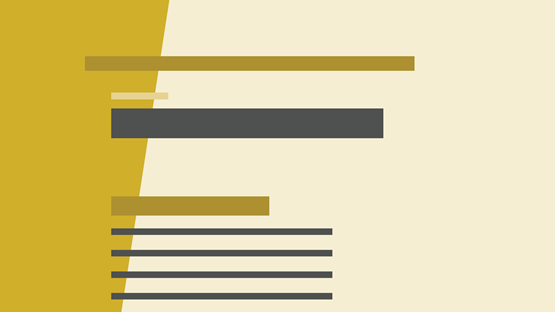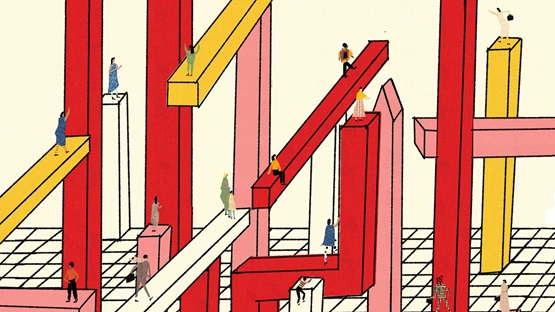Antitrust is back.
After decades of deliberate neglect, monopoly power is facing renewed scrutiny from legal scholars, economists, and policymakers. Big Tech behemoths like Amazon, Apple, Google, Facebook, and Microsoft are the new focus, and the concern is how such corporations distort information, markets, and society itself.
But new scholarship from Minneapolis Fed Senior Economist James Schmitz illuminates very different aspects of monopoly power—forms of market control that have been widespread yet overlooked for years—and finds that they play a deeply destructive role in the U.S. economy, particularly for the least well-off.
Monopolies not only raise prices, hurting all consumers, says Schmitz. They also limit or eliminate substitutes for their products that low-income households could otherwise choose. Excluded from markets by both excessive cost of conventional goods and elimination of substitutes, the poor suffer doubly.
This is not an isolated or infrequent practice, Schmitz shows, but a pervasive pattern, present in markets for the most basic and essential products. The paper lays out evidence from nearly a dozen, including housing, legal services, dental services, medical care, education, and others. “Low-income households are shut out of markets … for goods and services that are extremely important for their economic well-being,” writes Schmitz.
An unconventional vision of monopoly
Schmitz has a broad vision of monopoly. He describes not corporations, by and large, but associations of people in the same business. “Only a small handful are giant organizations,” he writes. “Rather, the vast majority are organizations such as trade associations, professional associations and union-management organizations.”
It’s an unconventional view by modern standards, but it has strong pedigree, beginning with Adam Smith. “People of the same trade seldom meet together,” Smith wrote in The Wealth of Nations, “but the conversation ends in a conspiracy against the public, or in some contrivance to raise prices.”
Economists and antitrust lawyers in the 1930s and ’40s had a similar perspective. Here and in other work, Schmitz cites economists Henry Simons at the University of Chicago and Theodore Kreps at Stanford, who studied monopoly power in that era, and particularly Thurman Arnold, an assistant attorney general for antitrust under FDR.
The scholars confirmed the standard antitrust story: Monopolies raised prices, hurting all households. But as in Schmitz’s work, these scholars also found that monopolists destroyed or sabotaged substitutes that would readily fulfill the needs of low-income households at lower cost.
In this way, they found, monopolies inflicted greater harm on the poor. While the well-off were harmed by higher prices, they could still buy what they wanted. The poor, in contrast, were effectively excluded from such markets by price hikes and denied alternatives through sabotage of substitutes. “In a monopoly economy luxuries expand while the necessities of life contract,” wrote Arnold in 1942. Monopolies “consolidate their power by destroying existing independent enterprise.”
Historical studies
Schmitz documents the same phenomenon in multiple industries, beginning with housing. Low-income households would be better able to afford quality housing if markets offered low-cost alternatives to traditional onsite construction, he observes. Inexpensive, factory-built houses—Schmitz calls them “small-modular homes”—can be built at a fraction of the square-foot cost of conventional housing. The average price for a small-modular home, often called manufactured homes, was $42,200 in 2013, according to the U.S. Census, while the average price of a single-family home built on-site, with traditional methods, was $249,429 (for the structure alone, not including land).
But the National Association of Home Builders has allied with groups within the Department of Housing and Urban Development, says Schmitz, to block these types of houses in most areas of the country. Denied affordable housing, low-income households rent—losing a traditional path toward building wealth. But, of course, renting a house built with traditional methods means much greater monthly rents than if homes built with factory methods were available.
Schmitz then discusses oral health care, describing an industry dominated by dental associations. These groups push for state laws that prohibit independent operation by dental therapists, denturists, and hygienists, who could otherwise fill cavities, make and fit dentures, and clean teeth at lower cost.
Oral health care is an industry where monopolists reduce productivity, Schmitz contends, illustrating the point through a dental group in Alabama that sought to provide care for low-income children by opening clinics in underserved areas and running a high-volume practice. The state’s dental association was unable to shut down the operation, but adjacent states succeeded. Monopoly restrictions in those states “blocked innovation in the industry, which ultimately reduced the value of income for low-income families significantly more than high income households.”
The paper documents similar situations in K-12 public education (where unions limit competition and innovation), legal services (where bar associations forbid paralegals from providing low-cost legal advice), and numerous other industries—from hearing aids to home mortgages, credit cards, used equipment sales and parts, repair services, generic pharmaceuticals, eye care and eyeglasses, the bail system, foster care, and, ironically, antitrust consulting economists.
Missing the true increase in inequality
Because it’s relatively easy to gather data on household income, economists tend to use household income inequality as the standard measure of inequality. And, indeed, household income is an important means by which families acquire many of those things that determine economic well-being, from housing to health care, clothing, and food.
But Schmitz’s research shows that income inequality significantly understates economic inequality. As monopolies raise prices for their goods and simultaneously destroy low-cost substitutes that low-income households would otherwise buy, they reduce the purchasing power of low-income households. High-income households only face higher prices, but low-income households are shut out of markets for goods and services that are extremely important for their economic well-being. Standard measures of income inequality don’t account for this divergence between rich and poor because it isn’t income that changes, but rather the purchasing power of income.
Since reports on inequality trends generally focus on income alone, they miss the actual increase in inequality of economic well-being that monopolies create when they destroy essential products.
A powerful indictment
Schmitz’s research renews and expands an analysis of monopoly practice that has long been dormant. While scholars decades ago recognized that monopolies existed in many forms beyond the corporation and engaged in anticompetitive practices beyond price hikes, the area has been overlooked until this revival.
Schmitz’s argument is straightforward. Monopolies not only raise prices, hurting all households, but they also limit or eliminate any products or services that might compete with their own, often with government support. By blocking access to low-cost alternatives, this disproportionately hurts poor households.
As lawmakers again turn their eyes to antitrust policy, Schmitz argues, this powerful indictment shouldn’t be overlooked—again.





